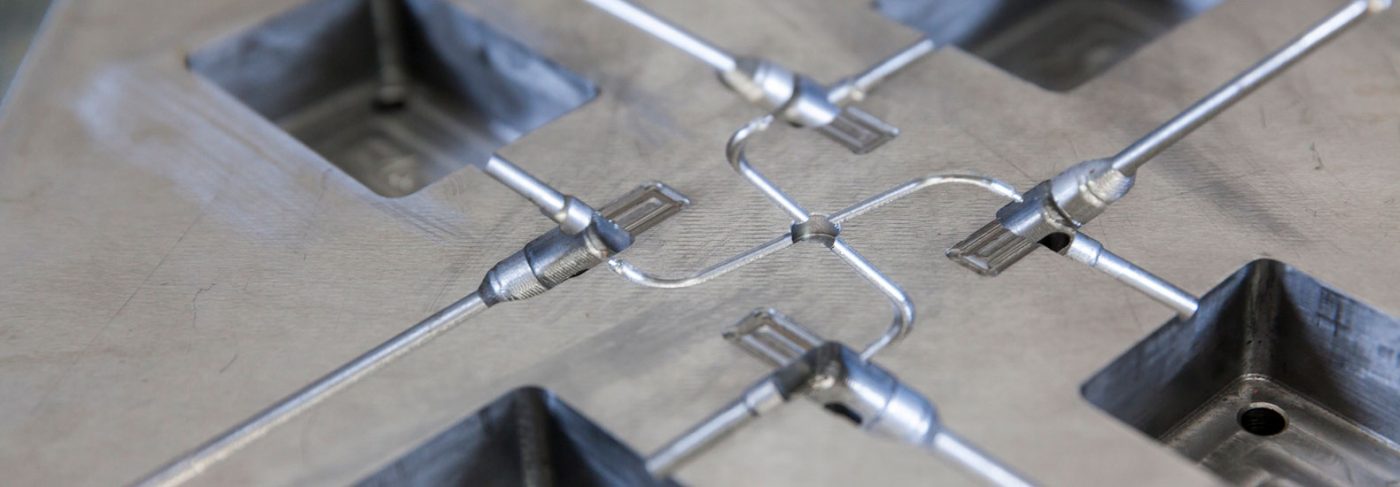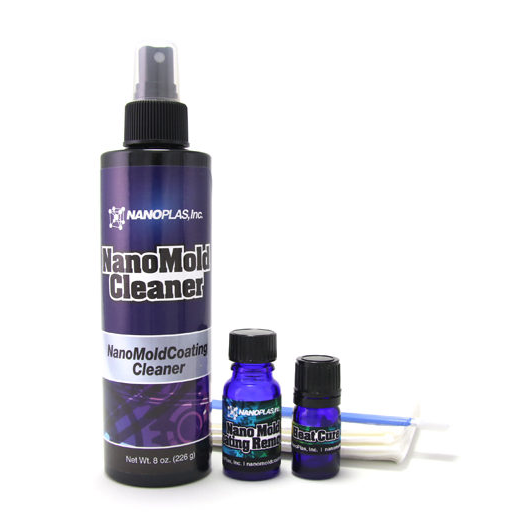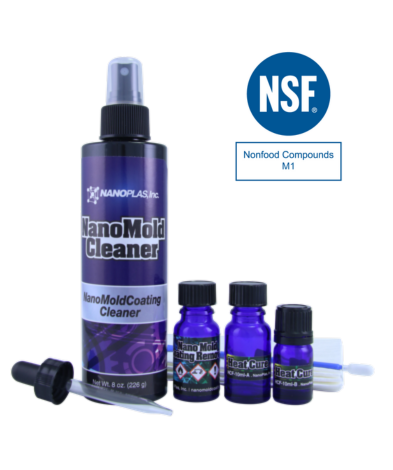
Splay in Injection Molding
Splay occurs when gas, moisture, or other volatiles are trapped and forced through the melt during injection, creating silver or cloudy streaks on the finished part. While often considered an aesthetic issue, splay can also indicate underlying processing or material problems that may affect part performance. Common causes include wet resin, excessive shear, or contamination in the melt stream.
Nanoplas mold coatings and cleaners can help minimize the root causes of splay. For example, QCRU Quick Cure Rubber Formula coating improves mold surface properties, helping resin flow more evenly and reducing hot spots where volatiles may accumulate. Our mold cleaners remove residue and buildup that can restrict flow or cause contamination, making them ideal for preventing splay in ongoing production.
FAQs
What Is Splay in Injection Molding?
Splay is a surface defect in injection molded parts that appears as silver, gray, or white streaks, typically running along the flow path of the resin. It’s caused by trapped gas, moisture, or volatiles escaping through the molten plastic during injection. While mainly cosmetic, splay can also signal deeper process or material issues.
How is it Possible to Reduce Splay in Injection Molding?
To reduce splay, start by ensuring resins are properly dried and that material hoppers and dryers are functioning correctly. Check for contamination, degraded material, or improper purging. Process adjustments, such as reducing injection speed, back pressure, or melt temperature, can also help. Additionally, maintaining clean molds with Nanoplas mold cleaners and using high-performance coatings can prevent buildup and improve flow uniformity.
What Does Splay Look Like?
Splay occurs when gas, moisture, or other volatiles are trapped and forced through the melt during injection, creating silver or cloudy streaks on the finished part. While often considered an aesthetic issue, splay can also indicate underlying processing or material problems that may affect part performance. Common causes include wet resin, excessive shear, or contamination in the melt stream.
Common Cause:
Moisture in Resin
Moisture is one of the leading causes of splay. When hygroscopic resins like nylon or PET aren’t properly dried before molding, the moisture turns to steam during injection. This steam forms streaks or bubbles as it escapes through the melt.
Solution:
HC Heat Cure
HC Heat Cure is a scientifically formulated injection mold coating that uses polymer technology to create a semi-permanent barrier on the surface of a mold.
Solution:
Heat Cure HCF
Heat Cure HCF is a scientifically formulated, FDA compliant coating that uses polymer technology to create a semi-permanent barrier on the surface of a mold.
Common Cause:
Contamination or Degraded Material
Foreign particles, degraded resin, or improperly purged machines can introduce contaminants that disrupt melt flow and release gases during injection. These gases then travel through the molten plastic, creating visible streaks. Regular use of high-performance mold coatings and proper purging between material changes can significantly reduce contamination-related splay.
Solution:
QC Quick Cure
QC Quick Cure has been scientifically formulated with the use of polymer technology to create a semi-permanent barrier on the surface of a mold.
Solution:
QCRU Quick Cure Rubber Formula
QCRU Quick Cure Rubber Formula has been scientifically formulated with the use of polymer technology to create a semi-permanent barrier on the surface of a mold.
Solution:
QCSI Quick Cure Silicone Formula
QCSI Quick Cure Silicone Formula has been scientifically formulated with the use of polymer technology to create a semi-permanent barrier on the surface of a mold.
Better Together
When used in tandem, Nanoplas products can help you significantly reduce costs, downtime, scrap, and more. Scientifically formulated, each product is individually effective, so when used together, they enhance mold performance significantly.
Startup scrap dropped by 87% after switching to Nanoplas Nano Ceramic Mold Grease.
“I have been in the tooling business for 40 years and have owned my own business for 15 years. I feel the Nanoplas products have been some of the best I have used. I would highly recommend giving the products a try. They speak for themselves.”
Tooling Manager, Ess Tec, Inc.



